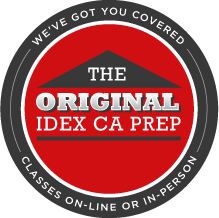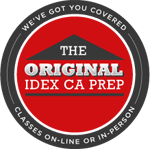Introduction to 2013 Code Updates (released in 2014)
In 2010, California has adopted the nation’s first green building code known as the California Green Building Standards Code (CALGreen). The California Building Codes are created in the year prior to release, hence the 2013 building codes are released in 2014 and so on. These code requirements have significant impact on all building types. As with most building codes, there are exceptions to many of the primary codes. It is important to review the complete California Building Codes before submitting the plans to the building departments. As designers, we are responsible for complying with the California building codes.
Also adopted in 2010 was the International Residential Code with California amendments as the new residential code to create the California Residential Code. This is a separate code book applicable to all new residential and non-residential construction. It establishes sustainable construction practices in planning and design, energy efficiency, water efficiency and conservation, material conservation and resource efficiency and environmental quality. These codes set minimum mandatory Green Building Standards and may include optional improved “tiers” that incorporate additional measures for residential and nonresidential new construction.
Some highlights in the 2013 California Green Building Standards Code are:
- 301 – Effective January 1, 2014 all residential buildings undergoing permit alteration, additions or improvements shall replace noncompliant plumbing fixtures with water-conserving plumbing fixtures. Plumbing fixture replacement is required prior to issuance of final completion for a certificate of occupancy or final permit approval by the local building department.
- Civil Code Section 1101.3(c) – Noncompliant plumbing fixture means:
- Any toilet manufactured to use more than 1.6 gallons of water per flush
- Any urinal manufactured to use more than 1 gpf
- Any showerhead manufactured to have a flow capacity of more than 2.5 gallons of water per minute
- Any interior faucet that emits more than 2.2 gallons of water per minute
- Civil Code Section 1101.3(c) – Noncompliant plumbing fixture means:
- 4.302 – Residential Mandatory Measures
- Indoor Water Use:
- Effective flush volume of all water closets shall not exceed 1.28 gallons per flush (gpf)
- Effective flush volume of urinals shall not exceed .5 gpf
- Effective single showerheads shall have a maximum flow rate of note more than 2.0 gallons per minute at 80 pounds per square inch (psi)
- Effective multiple showerheads serving one shower shall be controlled by a single valve and have a maximum combined flow rate of not more than 2.0 gallons per minute (gpm) at 80 psi with only one shower outlet to be in operation at a time
- The maximum flow rate of lavatory faucets shall not exceed 1.5 gallons maximum at 60 psi and 0.8 gallons per minutes minimum at 20 psi
- The maximum flow rate of kitchen faucets shall not exceed 1.8 gpm at 60 psi
- Indoor Water Use:
The 2013 California Residential Code is a separate document applicable to detached one and two family dwellings. This code covers all structural requirements for “conventional construction” and non-structural aspects of dwelling construction. The requirements for townhouses (not more than three stories) are also included in the Residential Code. Multi-family residential projects are found in Part 2, Volumes 1 and 2 of the California Building Code.
Some highlights in the California Residential Code are:
- R303 – Bathrooms, water closet compartments and other similar rooms shall be provided with aggregate glazing area in windows of not less than 3 square feet, one-half of which must be openable. The glazed areas shall not be required where artificial light and a local exhaust system (20 CFM) exhausted to the outside are provided.
- R303 – Each bathroom containing a bathtub, shower or tub/shower combination shall be mechanically ventilated for the purposes of humidity control. Window operation is not a permissible method of providing bathroom exhaust for humidity control.
- R311- Exiting from floors above or below the first floor in habitable space has been revised to limit the maximum travel distance to 50 feet.
- R313 – Residential Fire Sprinklers are now required in all new residential construction
- Exception – An automatic residential sprinkler system shall not be required for additions or alternations to existing buildings that are not already provided with an automatic residential sprinkler system.
- R312 – Guardrails (guards) for all residential dwelling units (inside and outside) are required to be 42 inches in height.
- R314 – Smoke alarms or smoke detectors:
- Shall be installed in one- and two-family dwellings shall be replaced after 10 years from the date of manufacture marked on the unit of if the date of manufacture cannot be determined
- Shall be installed a minimum of 20’ horizontal distance from a permanently installed cooking appliance
- Avoid installing within 36” horizontal path from the supply registers of a forced air heating or cooling system or from the tip of a ceiling-suspended paddle fan
- Locate in stairways in the path of potential rising smoke
- Locate on the highest portion or on the sloped portion within 12” vertically down from the highest point tray-shaped ceilings
- R315 – Carbon monoxide alarms:
- Shall be installed in new construction dwelling units and in sleeping units within which fuel-burning appliances are installed and in dwelling units that have attached garages.
- Shall receive their primary power from the building wiring with no disconnecting switch where such wiring is served from commercial source and shall also be equipped with a battery back-up
- Shall be installed in each separate dwelling unit sleeping area in the immediate vicinity of the bedroom(s) and on every level of a dwelling unit
- Solely battery operated or plug-in type with battery back-up in areas where no construction is taking place is permitted in existing buildings
- Device and instructions shall be approved by the State Fire Marshal
The other documents in this section concern summarized accessible codes that can also be used as guidelines, if not required as mandatory code, for universal design. It is recommended that designers refer to the 2013 California Building Code books for more details and drawings. Another excellent resource is the CLCID 2013 Reference Manual that includes CALGreen and focuses on building codes for interior designers. To obtain a copy of that manual, go to www.clcid.org or contact treasurer@clcid.org.
More code details:
CBC – Kitchens 2014 – Kitchens
CBC – Bathing Facilities 2014 – Bathtubs and Showers
CBC – WC 2014 – Water Closets


